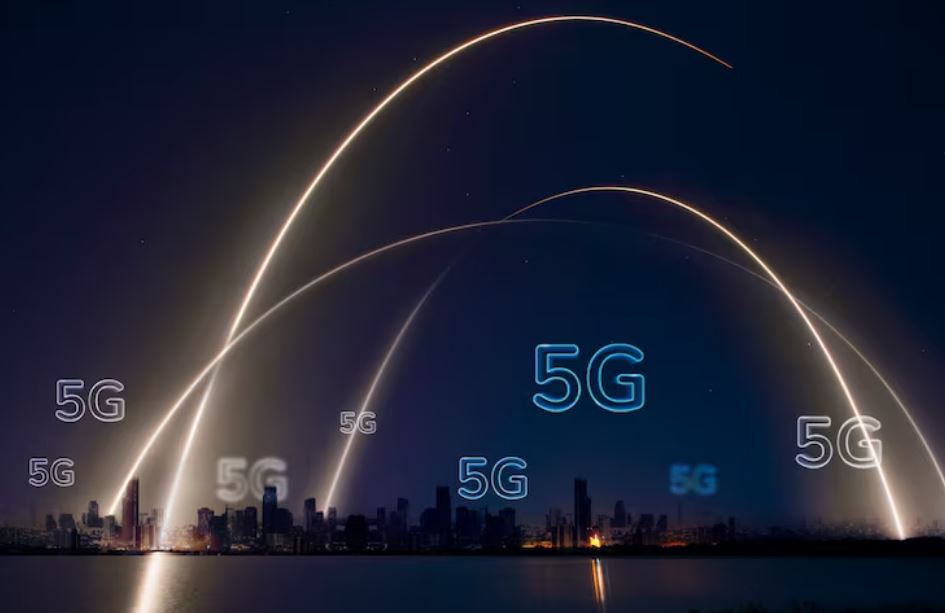
A silent competition is influencing how people interact, collaborate, and dream across cities, rooftops, and living rooms. Speed is only one aspect of the conflict between fiber and 5G; another is philosophy. 5G represents freedom, flexibility, and instantaneity, while fiber represents accuracy, stability, and endurance. Although both technologies are extremely successful in their respective fields, their combination provides a more complex picture.
Fiber is incredibly clear, dedicated, and unbroken, much like a private highway. Its glass thread network ensures ultra-low latency and unmatched dependability by transmitting data at the speed of light. Families who depend on video calls, gaming, or 4K content streaming find fiber’s performance to be nearly magical. It is incredibly effective, capable of smoothly transporting large amounts of data, and its subterranean cables are incredibly resilient, protected from electromagnetic interference and storms.
| Category | Details |
|---|---|
| Fiber Internet | Wired, stable, high-speed, and long-term infrastructure |
| 5G Internet | Wireless, mobile, flexible, and fast-evolving network |
| Fiber Pros | High reliability, symmetrical speeds, unlimited data, future-proof |
| 5G Pros | Mobility, easy deployment, coverage flexibility, cost-effective |
| Fiber Cons | Expensive installation, limited rural access |
| 5G Cons | Unstable speeds, weather interference, data caps |
| Ideal Use for Fiber | Smart homes, gaming, streaming, remote work |
| Ideal Use for 5G | Mobility, IoT devices, temporary setups, remote areas |
| Societal Impact | Fiber drives digital productivity; 5G fuels mobility innovation |
5G, on the other hand, thrives in motion. It is highly adaptable and made to provide wireless connectivity anywhere people go, including in busy streets and autonomous vehicles. Its towers connect devices more quickly than ever before by beaming data across cities. 5G makes it possible for mobile devices, drones, and smart cars to communicate in real time by utilizing cutting-edge frequency technology. It is the embodiment of freedom, enabling connectivity without physical limitations, boundaries, or cables.
However, as both technologies advance quickly, they appear to be more like collaborators than rivals. Fiber powers the very foundation of 5G networks, according to experts. Fiber backhaul connects each 5G tower, guaranteeing dependability and speed. The wireless genius of 5G could not live up to its promise without the silent foundation of fiber. This especially creative collaboration highlights a more profound reality: cooperation, not technological superiority, will determine connectivity in the future.
To expand both infrastructures at the same time, industry titans like AT&T, Verizon, and T-Mobile are spending billions of dollars. Fiber for fixed home networks and 5G for mobile expansion are examples of complementary strengths highlighted in their strategies. Telecom analysts predict that while fiber will continue to be the foundation of homes, businesses, and smart cities, 5G may take over public areas and automobiles. Each completes the gaps left by the others, creating a network ecosystem that is surprisingly economical and effective.
Families frequently base their decision on lifestyle. Fiber’s incredibly dependable connection is essential for a home where streaming, gaming, and remote work are commonplace. However, because 5G eliminates the need for complicated installation, it is a particularly advantageous option for rural residents or mobile professionals. To provide connectivity in the most remote areas, even well-known entertainment companies like Elon Musk’s SpaceX use a mix of satellite-enhanced 5G coverage and fiber-fed base stations.
The economic ramifications are just as significant. In order to close the digital divide, the $43 billion BEAD program of the US government is giving fiber and fixed wireless deployments top priority. The initiative connects underserved areas, enabling entrepreneurship, healthcare, and education in previously unattainable ways. The belief that having dependable internet access is now a right rather than a luxury is reflected in this policy-driven investment.
In the meantime, this change’s social component is similar to previous technological revolutions. The combination of fiber and 5G is revolutionizing communication, much like electricity once redefined productivity. Fiber-powered recording platforms allow a musician in Nashville to work in real-time with a producer in Seoul, and 5G allows an autonomous car in Los Angeles to instantly communicate with traffic sensors. With strikingly powerful synergy, both technologies are transforming connection, creativity, and commerce.
The shift is not without challenges, though. Installing fiber is still expensive and time-consuming, especially in rural areas. Crews must traverse difficult terrain while excavating, trenching, and threading cables. However, in areas with high population density, 5G faces challenges such as physical interference and spotty coverage. Congestion, weather, and buildings can all drastically slow it down. The necessity of dual advancement is highlighted by these opposing weaknesses.
Public opinion is also changing. Consumers view fiber as incredibly dependable, according to surveys, while 5G is praised for its versatility and ease of use. Fiber and 5G home internet have surpassed traditional cable services to take the top spot on customer satisfaction charts, according to a recent American Customer Satisfaction Index report. This implies that both technologies are significantly enhancing user experience across demographics in addition to increasing access.
Culturally speaking, the struggle between fiber and 5G reflects changes in contemporary life, such as the conflict between home and movement, stability and mobility. Rootedness and the constant hum of a family’s interconnected home are mirrored by fiber. 5G records motion, allowing for technologically driven flexible lifestyles. This relationship is similar to that of vinyl and streaming in many respects—one is classic and tactile, while the other is fluid and futuristic. Both have meaning and a purpose.
Strategic integration of these technologies allows telecoms to meet national digital goals much more quickly. This dual network strategy is best demonstrated by smart cities such as Stockholm and Singapore. While 5G activates sensors, automobiles, and public networks, fiber powers government systems, hospitals, and data centers. Together, they create a digital fabric that improves quality of life, safety, and efficiency.
The argument over “who will win” starts to become less important as society moves into this new era of hyper-connectedness. 5G and fiber are working toward the same goal from different angles rather than vying for supremacy. One dances through the air, while the other is rooted far below the ground. Both are crucial to the next phase of communication, especially innovative, and transformative.
